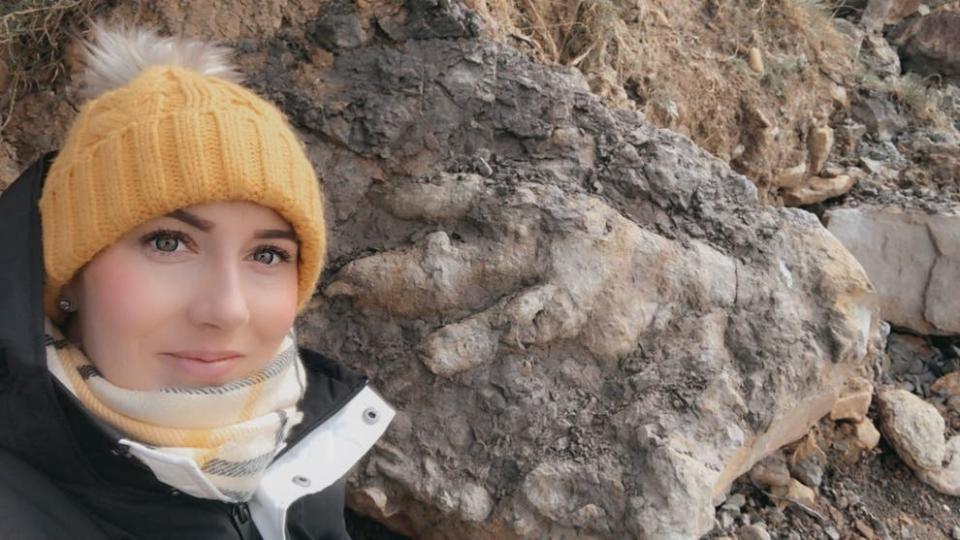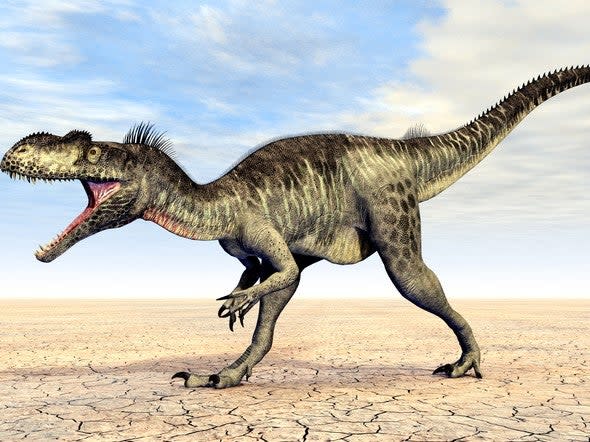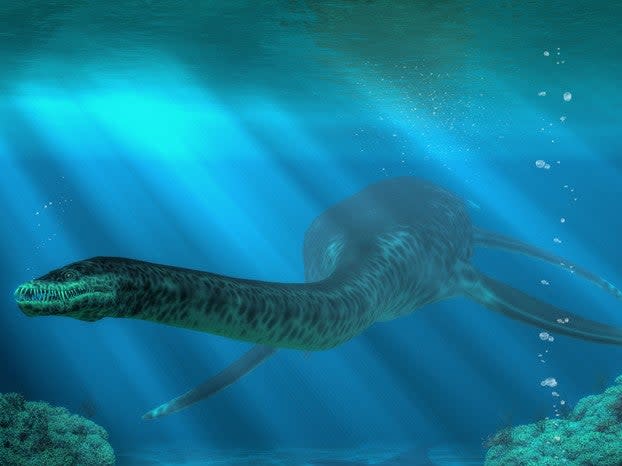Britain’s most fantastic fossil finds, from dinosaur firsts to female pioneers

A giant footprint made by one of the biggest dinosaurs ever to roam across Britain has been discovered at a Yorkshire beach, it has been reported.
Archaeologist Marie Woods stumbled on the massive fossil – dating back 175 million years – while collecting shellfish for her dinner this week.
Experts say the monster print was probably made by a 30ft, meat-eating Megalosaurus and have labelled it a “wonderful” find.
Which makes it the latest in a long line of such finds on these fair isles.
For two centuries the UK has punched way above its weight in terms of uncovering ancient creatures that once lived here.
Its diverse geology combined with the fact that it is, globally speaking, a relatively small piece of land – and, therefore, easy to zoom in on places of potential interest – have led to some of the world’s great palaeontological unearthings being made right here. The industrial revolution helped too: it meant a lot of digging at a point in time when people were becoming conscious of extinct life forms.
So, what exactly are the most fantastic fossil finds ever discovered here?
1. World’s first dinosaur — in Oxfordshire
Fossils of prehistoric creatures had been found long before the 19th century. It’s just no-one knew exactly what they were.
“For centuries, people were thinking that they were finding the bones of mythological animals or creatures that had been killed in Noah’s flood,” says Professor Paul Barrett, dinosaur researcher at the Natural History Museum in London. “Quite bizarre things like that.”
Then William Buckland came along.
In 1824, this geologist and theologian discovered the bones of a massive reptile-like creature in the middle of rock dating back 165 million years in the Oxfordshire village of Stonesfield. Despite his deep religious beliefs, he was convinced this was an animal that must have existed before humanity; that, in effect, the then-orthodox interpretation of the Bible – that man was literally created on the sixth day – was wrong.
He called his find Megalosaurus – great lizard – and it would come to be considered the first of a previously unknown animal: dinosaurs.

2.A home-building man
As palaeontology goes, it might have seemed a relatively insignificant find to an outside observer: a couple of pieces of human shin bone and a couple of teeth in a West Sussex quarry.
But when archaeologist Mark Roberts uncovered these fossils in 1993 – along with some associated tools – it was to rewrite the understanding of humanity on the British Isles: at 400,000 years old, Boxgrove Man (as the bones were named) is our earliest known ancestor to have lived here.
What do we know about him? He belonged to a sub-species called Homo heidelbergensis, was intelligent enough to use tools and control fire, enjoyed socialising, and hunted large animals for food.
He was also – and this would have been useful given the species’ migration from Europe’s warmer climes – the first humans to build and live in shelters.
3. The schoolboy who upended scientific consensus
Up until the Fifties there was a scientific consensus that life on earth probably started around 500 million years ago.
“It was thought if you looked in rocks older than that you wouldn’t find any evidence of life,” says Professor Barrett. “People had been looking but never with any success.”
Then a Leicestershire schoolboy, Roger Mason, found Charnia, an ancient sea organism dating back 570 million years.
This fossil – stumbled on in Charnwood Forest – was among the first of a sudden rush of similar findings which collectively proved that, in fact, life was far older than anyone had ever previously imagined. Today, it is thought to stretch back at least a billion years.
Mason himself, inspired by his own discovery, went onto become a geologist.
4.A female pioneer
Mary Anning was, according to the campaigner Anya Pearson, “three things you didn't want to be in 19th-century Britain – she was female, working class and poor.”
For good measure, she also had no formal education and was brought up in a family of such ill health that eight of her nine siblings died before adulthood. When she was 11 her father went the same way too.
Yet Anning would grow up to be one of the greatest fossil hunters ever to live.
In 1823, at the age of just 24, she discovered the world’s first complete skeleton of a Plesiosaur, a marine reptile so unlike anything scientists had ever seen before (“a classic Loch Ness monster sort of thing,” says Professor Barrett), many believed it to be a fake.
The creature, found in Dorset, was just the headliner in a career of discoveries that transformed scientific thinking about evolution and life on ancient earth.
Yet Anning herself was – because of her sex – repeatedly shunned. Her discoveries were credited to the men and museums who bought them. She died relatively poor aged just 47 of breast cancer.

5.A quarry full of footprints
In global terms, dinosaur footprints are not hugely uncommon. But few sites have the sheer numbers of such fossils as a limestone quarry in the village of Ardley in Oxfordshire.
Here, running along a stretch of the M40, more than 40 sets of tracks – literally hundreds of prints – were discovered by a Birmingham schoolteacher in 1997. So extensive are they – running 200 metres in places – that they rival the great dinosaur ‘freeway’ tracks of America.
“The evidence suggests lots of different dinosaurs criss-crossing what would have been a shallow lagoon edge,” says Professor Barrett. “The site is enormous.”
Such trails, he adds, are especially useful to palaeontologists because they record a specific moment in time.
“With a skeleton we get an idea of what the animal looked like and of their lifestyle,” he explains. “With a trackway you’re getting almost real time information: you know how quickly they are walking, the way they are moving, what other animals were around at almost the exact same time. It is a treasure trove of information.”
Read More
UK Covid-19 vaccinations: Latest figures
Salmond ‘does not know’ if Russia behind Salisbury nerve agent attack

 Yahoo Finance
Yahoo Finance 